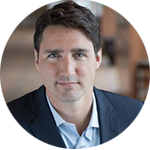Under the Canada Health Act, Canada’s universal health care system ensures access to hospital and physician visits, but some essential services are excluded1. Among the services excluded is access to prescription drugs. Across Canada, each province and territory offers some form of prescription drug coverage to selected populations, such as those on social assistance, seniors, or those with specific diseases with high drug costs. However, who is covered, and which drugs are covered, varies between and within provinces, leaving significant gaps in coverage across the country2.
Many working-age Canadians have access to prescription drug coverage through insurance plans through their employer. As the proportion of adults employed in part-time, precarious work increases3, and as employers increasingly cut back on their drug coverage plans, fewer and fewer Canadians enjoy employer coverage.
For too many Canadians a lack of drug coverage means being unable to afford the prescription drugs that they need. A full one-third of working Canadians don’t have coverage for prescription drugs through their employer, and our patchwork of drug programs across the country leaves many unable to afford the prescription drugs they need4. Further, prescription drug access and affordability has been found to be an issue for 23% of Canadian households.5 Being unable to afford their prescription drugs means that they are not getting the health coverage they need; or, they have to give up other necessities – like food – in order to pay for their drugs.
A plan that address the issue of prescription drug unaffordability and ensures that all populations across the country are able to access the drugs prescribed to them by their physicians would significantly enhance the health of Canadians.
Health Impacts of Insecure Access to Prescription Drugs
There are major health implications to being unable to afford the prescription drugs necessary for medical treatment. Patients’ inability to afford the treatments that they need can result in lower self-reported health, and increased risk of illness and complications6,7. For those with chronic conditions like diabetes and hypertension, cost-related non-adherence to prescription drugs can make it difficult to manage conditions and lead to further complications. Research has also shown that not being able to afford drugs can lead to higher rates of hospitalizations, placing further burden on the healthcare system8.
Nearly a quarter of Canadians reported in 2015 that they had worried in the past year about how they or their families might be able to afford the drugs they need9. The anxiety associated with inability to afford basic necessities such as food, housing, prescription drugs and dental forces individuals to make trade-offs which may impact their health, such as making the decision whether to fill a prescription or go to the dentist.
Health Equity Impacts of Insecure Access to Prescription Drugs
Low-income Canadians are far more likely to report an inability to access medically necessary drugs. In Canada, twenty-two percent of drugs are paid for out of pocket10 and this cost disproportionately falls on low-income individuals and their families. Low income families are far less likely to have employer-provided coverage than higher income families, and are also more likely to have chronic medical conditions requiring ongoing treatment. Those who work full time are almost three times as likely to have employer provided coverage than those who work full time; with 73% of part-time workers without coverage. Further, 94% of Canadians making over $100,000/year have employer-provided coverage, compared with just 17% of those making under $10,000, and 32% of those making between $10,000 and $20,00011.
Canadians without access to private or public prescription drug coverage will either pay out of pocket or be unable to receive medically necessary drugs. That many Canadians are faced with this choice of paying for medically necessary drugs, or to sacrifice other household expenses, is a major source of health inequities. Canadians with a household income under $20,000 are four times more likely to report not filling a prescription because of cost than those with a household income over $80,00012.
Low-income Canadians are already at a health disadvantage. It has been well-documented that a lack of access to the basic social determinants of health – housing, food, education, good jobs – puts people at a great risk of poor physical and mental health13. These disadvantages are then exacerbated in situations where low-income people have poorer access to healthcare than higher-income people. By creating a system in which low-income people have a harder time getting high quality health care, including the drugs prescribed to them, those most in need are being put at even further risk of poor health.
How do the federal candidates measure up for equity in access to prescription drugs?
 Conservative |
 Green14 |
 Liberal |
 NDP 15 16 |
|
|---|---|---|---|---|
| Public Prescription Drug Coverage |
|
|
|
|
| Cost of Prescription Drugs |
|
|
|
|
Prescription Drugs for a Healthier Canada
Access to prescription drugs is an integral component of health care, and is essential to the maintenance of good health and the treatment of disease. The NDP and the Green Party have both considered the health impacts of inequitable access to prescription drugs in their platforms. Despite the gap in Canada’s health care system which leaves over one quarter of Canadians unable to afford their prescription drugs, neither the Liberals nor the Conservatives have yet addressed the issue of prescription drug affordability in Canada.
The Green Party would address the gap in access to affordable prescription drugs by developing a national pharmacare plan. This plan would provide universal access to prescription drugs for all Canadians at little or no direct cost to patients, and ensure equitable access regardless of demographic characteristics or illness. This commitment is based on a plan proposed by pharmacare experts17 and would have a significant impact in reducing health inequities in Canada.
The NDP has committed $2.6 billion over four years to support bulk purchasing of prescription drugs in partnership with provinces with a goal of achieving universal access. Through this bulk purchasing, they are targeting a 30 percent reduction in prescription drug costs. This reduction in costs will improve access to prescription drugs, but may potentially leave gaps in affordability and access for some groups. Depending on how this expansion of public coverage is structured, it could leave some Canadians in positions where other household costs leave them unable to afford prescription drugs.
The Liberal Party has acknowledged the need to address the cost of prescription drugs through bulk purchasing and a review of the cost of prescription drugs. While this decrease in cost would improve access to prescription drugs for some populations it would still leave many Canadians without coverage and unable to afford the prescription drugs they need.
The Conservative Party has not addressed public prescription drug coverage.
Download Access to Prescription Drugs
- Minister of Justice (1985) “Canada Health Act,” http://laws-lois.justice.gc.ca/eng/acts/C-6/FullText.html ↩
- S Barnes and L Anderson (2015). “Low Earnings, Unfilled Prescriptions.” The Wellesley Institute. https://www.wellesleyinstitute.com/publications/low-earnings-unfilled-prescriptions/ ↩
- Law Commission of Ontario (2012). “Vulnerable Workers and Precarious Work.” http://www.lco-cdo.org/en/vulnerable-workers-final-report ↩
- S Barnes and L Anderson (2015). “Low Earnings, Unfilled Prescriptions.” The Wellesley Institute. https://www.wellesleyinstitute.com/publications/low-earnings-unfilled-prescriptions/ ↩
- Angus Reid. (2015) “Prescription drug access and affordability an issue for nearly a quarter of all Canadian households” http://angusreid.org/prescription-drugs-canada/ ↩
- Heisler, Michelle et al. (2004). “The health effects of restricting prescription medication use because of cost”. Medical Care 42(7): 626-634. ↩
- J Piette et al. (2004). “Health insurance status, cost-related medication underuse, and outcomes among diabetes patients in three systems of care”. Medical Care 42(2): 102-109. ↩
- M Sokol et al. (2005). “Impact of medication adherence on hospitalization risk and healthcare cost”. Medical Care 43(6): 521-530. ↩
- Angus Reid. (2015) “Prescription drug access and affordability an issue for nearly a quarter of all Canadian households” http://angusreid.org/prescription-drugs-canada/ ↩
- “National Health Expenditure Trends, 1975 to 2014,” (Ottawa: Canadian Institute for Health Information, 2014). ↩
- Barnes and Anderson 2015. Low Earnings, Unfilled Prescriptions ↩
- Law et al. (2012). “The Effect of Cost non Adherence to Prescription Medications in Canada.” CMAJ 184(3): 297-302. ↩
- Mikkonen J and Raphael D. (2010). Social Determinants of Health: The Canadian Facts. Toronto: York University School of Health Policy and Management. http://www.thecanadianfacts.org/ ↩
- http://www.greenparty.ca/sites/default/files/platform_english_web.pdf; http://www.greenparty.ca/en/media-release/2015-07-28/green-party-announces-national-pharmacare-plan ↩
- http://www.ndp.ca/better-access-to-prescription-drugs ↩
- http://www.ndp.ca/news/canadians-to-pay-less-prescription-drugs-tom-mulcair ↩
- S. Morgan, D. Martin, M.A. Gagnon, B. Mintzes, J.R. Daw and J. Lexchin, Pharmacare 2020: The future of drug coverage in Canada. Vancouver, Pharmaceutical Policy Research Collaboration, University of British Columbia, July 2015. http://pharmacare2020.ca/assets/pdf/The_Future_of_Drug_Coverage_in_Canada.pdf ↩
